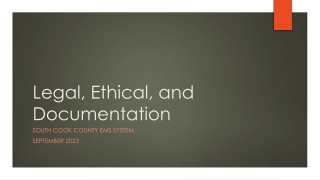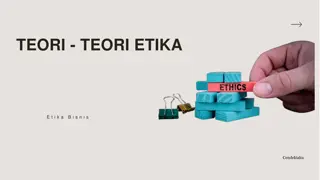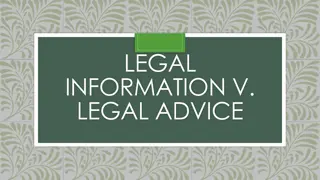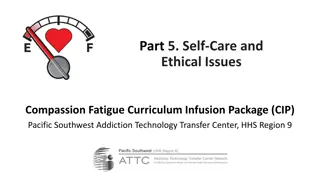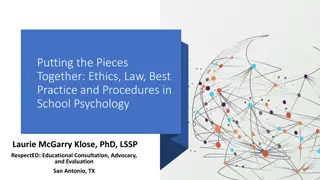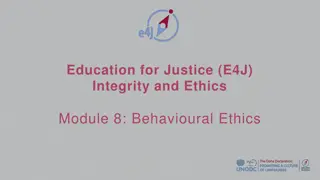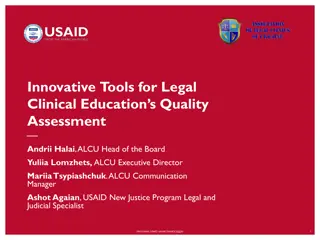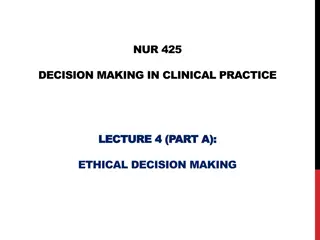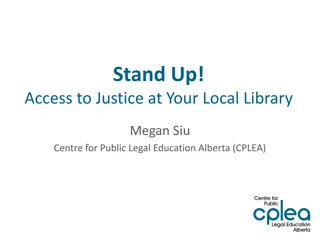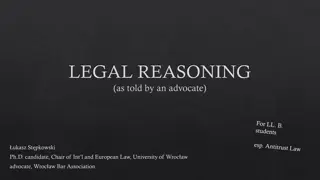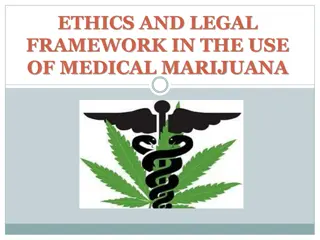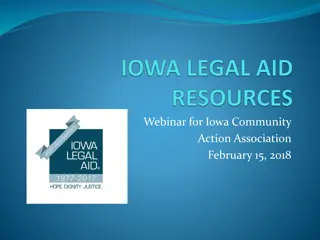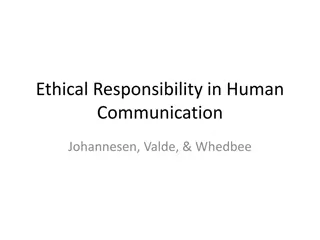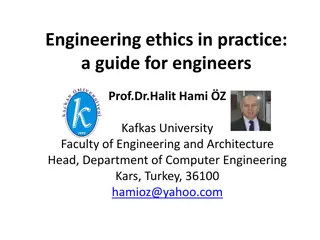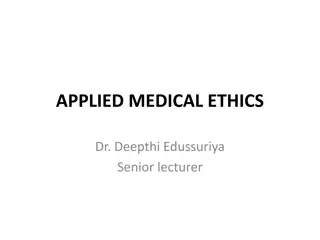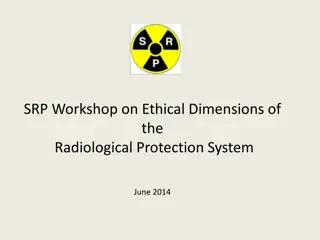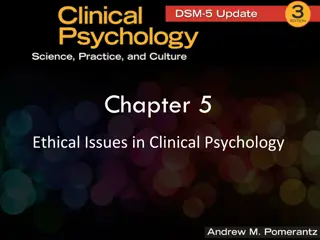Ethical Development in Legal Education: NIFTEP Workshop Insights
This course at the NIFTEP Workshop delves into developing students' ethical awareness, cultural competence, and understanding of legal responsibilities. Upon completion, students are expected to make informed decisions on ethical dilemmas, legal roles, and conduct respectful discussions on legal ethics.
Download Presentation

Please find below an Image/Link to download the presentation.
The content on the website is provided AS IS for your information and personal use only. It may not be sold, licensed, or shared on other websites without obtaining consent from the author.If you encounter any issues during the download, it is possible that the publisher has removed the file from their server.
You are allowed to download the files provided on this website for personal or commercial use, subject to the condition that they are used lawfully. All files are the property of their respective owners.
The content on the website is provided AS IS for your information and personal use only. It may not be sold, licensed, or shared on other websites without obtaining consent from the author.
E N D
Presentation Transcript
A Schulichian Show and Tell (including Collaborative Teaching as Interpretive Dance) Jocelyn Downie and Richard Devlin Dalhousie University Schulich School of Law NIFTEP WORKSHOP Banff July 2012
This course is intended to develop students: awareness of and ability to identify and resolve ethical problems in a legal context awareness of the need for cultural and emotional competence in the practice of law understanding of the legal and ethical duties and responsibilities of lawyers and the legal profession understanding of the different possible roles for lawyers, the legal profession, and the legal system knowledge of the relevant legislation, regulations, rules of professional conductand common or case law knowledge of legal and quasi-legal responses to unethical conduct and professional incompetence ability to make informed and reasoned contributions to the development of the legal profession and legal system
Upon successful completion of the course, it is hoped that students will be able to: make informed and reasoned decisions when they are confronted with ethical dilemmas during law school make informed and reasoned decisions about what kinds of lawyers they want to be (if any) and how they want to use their law degrees (if at all) meet Law Society legal ethics and professional responsibility requirements make informed and reasoned decisions when they are confronted with ethical issues after graduation act in a professionally and ethically appropriate manner make informed and reasoned contributions to the development of the legal profession and legal system clearly express and defend positions on a range of issues in legal ethics and professional responsibility conduct a respectful discussion of controversial legal ethics and professional responsibility issues with individuals holding contrary views
A LAWYER'S WEB OF RELATIONSHIPS Client Client Client Lawyer Client
A LAWYER'S WEB OF RELATIONSHIPS Partners, associates, staff Business Partners Client Courts The Law Society Client Client Lawyer Society Third parties Family Client
1) Get the facts 2) Investigate the governing rules - Act - Regulations - case law - Codes of Ethics - disciplinary decisions of Bar Societies 3) Reflect on the underlying spirit and philosophy of the rules - theories, principles, norms, values, virtues 4) Ascertain the client s interests, wishes, rights, and obligations (where there is a client involved) 5) Reflect on the interests of other affected parties 6) Reflect on one s duties (to the public, the court, the profession, colleagues, one s family) 7) Identify one s own personal theories, principles, norms, values, and virtues that are implicated in the situation - family, culture, community, religion -philosophy
8) Identify the choices available 9) Assess the possible consequences of each of the choices - probability and nature (severity) or possible harms and benefits 10) Identify the constraints on particular choices - e.g., illegal, contrary to Code of Ethics, contrary to personal ethics 11) Discuss with others - more senior colleagues - Bar Society - external ethics experts 12) Engage in self-reflection 13) Identify priorities 14) Choose and implement a course of action/inaction 15) Review choice - the result - the processes - the need for change (personal, professional, institutional)
INTRODUCTION FORMATION A) B) C) ADVERTISING SOLICITATION CHOICE OF CLIENT TERMINATION A) WITHDRAWAL DURING A MATTER MANDATORY OPTIONAL COURT APPROVAL OF WITHDRAWAL B) FORMAL TERMINATION AFTER CONCLUSION OF MATTER
1. How does the lawyer-client relationship balance the three values of integrity, loyalty and justice? 2. How do we calibrate our obligations to individual clients with our obligations to the profession, the courts, other lawyers and society? 3. How do we mediate between the traditional view of lawyering as a profession and the more modern view of lawyering as a business ? 4. How do we balance the pursuit of our public duties as lawyers with our own private financial/ideological preferences?
Advertising Objections to advertising Traditional Reputation management/Victorian snobbery Limit competition Unnecessary Contemporary Encourage self-aggrandizement at expense of truth Arouse unattainable expectations of clients Increase costs of legal services for clients Reinforce concentration of legal services in large firms
Advertising Reasons for allowing advertising Access to justice Informed client choice Freedom of expression for commercial speech Competition Rules re: advertising Allowed with limits
Our Lawyers Rock mess with us and we'll bury you under a landslide of paper. very expensive paper. then we'll light it on fire and dance in the ashes. naked. Your Lawyers Stink sadly, there are no lawyers in the world that can save your sorry butt. its not your fault, we got to ours before you and they're better... as we've already said. innovation. clarity. function .
http://www.spdefence.ca/wp-content/themes/spd/images/SPD-logo.gifhttp://www.spdefence.ca/wp-content/themes/spd/images/SPD-logo.gif http://www.spdefence.ca/wp-content/themes/spd/images/contact-button.gif
INTRODUCTION FORMATION A) B) C) ADVERTISING SOLICITATION CHOICE OF CLIENT TERMINATION A) WITHDRAWAL DURING A MATTER MANDATORY OPTIONAL COURT APPROVAL OF WITHDRAWAL B) FORMAL TERMINATION AFTER CONCLUSION OF MATTER


